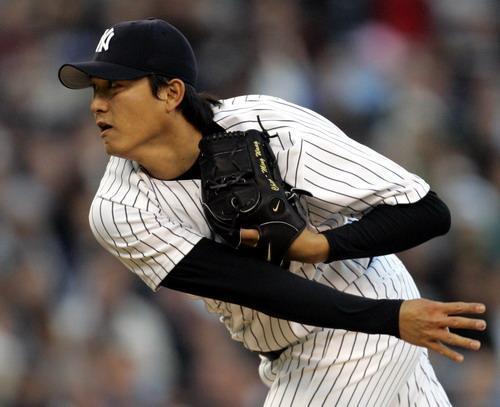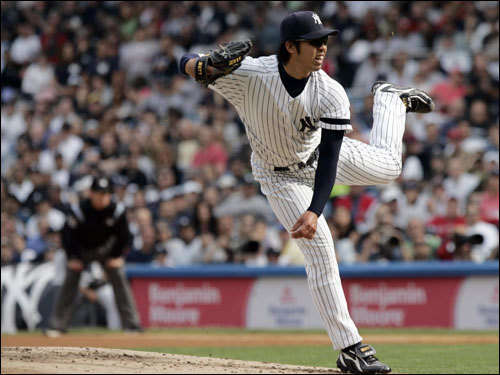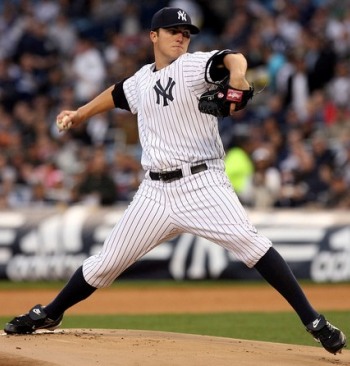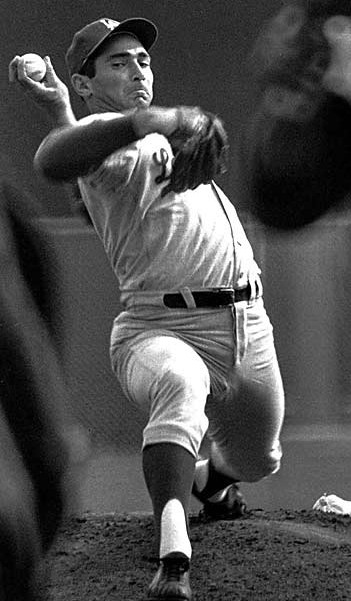Well, you can't say the Giants aren't trying.
Yesterday, as reigning Cy Young Award winner Tim Lincecum made perhaps the best start of his young career, the Giants front office was completing a trade for the Cleveland Indians' Ryan Garko, a 28-year old firstbaseman who bats right handed and has a 906 career OPS against left handed pitching (960 this year). The trade allows the Tribe to give rejuvenated prospect Andy Marte a long look at first base for the rest of the year.
The Indians get 21-year old LHP Scott Barnes, who was ranked by Baseball America as the Giants' 9th best prospect this year. Nothing he's done since then has tarnished that reputation, as he's fanned 99 batters in 98 innings in High A ball this season, going 12-3 with a 2.85 ERA for San Jose.
Garko's eligible for arbitration after this year and is expected to be a part of the team in 2010, but then as Rob Neyer points out, so was A.J. Pierzynski. In talking up the trade, Giants GM Brian Sabean had this to say about Garko:
"Professional hitter, really punishes left-handed pitching. [The trade] complements what we're trying to do to develop Ishikawa. The timing was right. He can drive in a run. He can hit a three-run homer."I know what Sabean's trying to say here, and though it's hitting below the belt a bit, I would just like to point out the following: Ryan Garko has hit a three run homer twice already this year. Travis Ishikawa has done it three times. So there.
"Professional Hitter" usually means "a firstbaseman who hits like a shortstop" (CF: Greg Colbrunn) but Garko's better than that. Baseball Reference says that the 750 OPS he posted in Cleveland last year (his worst in the majors) would have been more like 771 playing in San Francisco, and that's just a park factor and league run scoring adjustment, not a league quality adjustment.

If there were a way to factor that in, Garko might have posted something like an 800 ops, which isn't very good for a first baseman, but it's better than most of the "hitters" on the Giants' current roster. His current line of .285/.362/.464 would be more like .296/.373/.473 in SF, according to baseball reference's adjustments. Since the Giants have 4th worst OPS in the majors against LHP, I can see where they feel like Garko can help. Unfortunately, they also have the 2nd worst OPS in the majors against right handed pitching, of which there is a great deal more, and Garko doesn't do much for them there.
Garko is a somewhat better hitter than Ishikawa, it seems, if only because he has more experience in the majors. But Ishikawa debuted in the majors two years before Garko did, landed a starting job two years before Garko did, and his season at AAA blows Garko's best out of the water. Garko posted an 882 OPS in Buffalo in 2005, compared to Ishikawa's 1107 OPS in Fresno last year. Both players were 24 years old in those years, though it's worth noting that garko regressed the next year in AAA while Ishikawa is holding his own in the majors this year.
So over the long haul, Ishikawa is probably going to be the better player and the better value, as he's almost three years younger, apparently more talented, and significantly less expensive than Garko. But for now, the Giants get a platoon partner who can mash lefties and doesn't embarass himself against righties, while Ishikawa...well...he gets the shaft. For now.
Regarding the pitching prospect the Giants sent to Cleveland, Sabean said,
"The pitcher we gave up is probably going to pitch in the big leagues. I think it was good for both clubs."Again, not to pick nits, but lots of guys have "pitched in the big leagues". He means that they expect Barnes to have some success in the majors, but of course his sentence would still be true if they thought it would take ten years for Barnes to make it to the Show and that he would immediately wash out.

Barnes was picked in the 8th round of last year's amatuer draft after spending three years pitching for St. Johns in New York. Against the Big East competition, he went a combined 17-7 with a 3.39 ERA and 263 strikeouts in 250 innings. He also walked quite a few batters, 114 of them, but almost never allowed a homer -only about one every 25 innings - no small feat in a league with aluminum bats, which kept his ERA down.
The Giants took it easy with him, giving him a couple of relief outings in Rookie ball Class A Short Season before sending him to the Sally League (single A) for the rest of the year. He compiled a 2.06 ERA and 63 strikeouts in 44 innings of work at the three levels. This year he's been nearly as good at High-A San Jose, and even more encouraging is the fact that he's cut his walk rate down from over 4/9IP in college to just a shade under 2.5/9IP in High A.
Sounds like a pretty good prospect, right? I couldn't figure why the Giants would give up a prospect as good as Barnes for Ryan Garko. But then a scouting report I read said that he only throws in the high 80's, and guys like that, even lefties, take a long time to learn to pitch in the majors, if they ever do at all, so that kind of explains it. Right?
Wrong. Two other scouting reports suggest that he throws consistently in the low 90's, with improved mechanics, that he's developing his curve and has a change up that's already near MLB quality. So what gives?
I don't know. I'd like to look at the fact that Sabean once traded next to nothing for the likes of Ellis Burks, Robb Nen, Jeff Kent, Jason Schmidt and Livan Hernandez (when they were good) and think that he knows what he's doing, but I have my doubts.
Sabean was also on the losing end of the White Flag Trade in 1997, gave up Joe Nathan, Francisco Liriano and a #1 draft pick for one year of A.J. Pierzynski, spent big money on Barry Zito, and seemingly has a soft spot for aging veteran free agents. Some of those work out (Moises Alou) but most do not (Edgar Renteria, Dustin Hermanson, Brett Tomko).
Sabean finally seemed to have figured that out and started developing his own players in the last few years, but then he goes and does something like this, and it makes me wonder. If Garko hits well and the Giants get into the playoffs, nobody will mind if Scott Barnes turns out to be a pretty good major league pitcher a couple of years from now.
The Giants are one game behind the Rockies in the NL Wild Card race, and almost half (26 of 63) of their remaining games will be against Colorado, Los Angeles, Philadelphia or Chicago, the best teams in the Senior Circuit, so they've got their work cut out for them. Garko might only be worth one or two wins more than Ishikawa over the rest of the season, but that just might make a difference in a race this close.





























